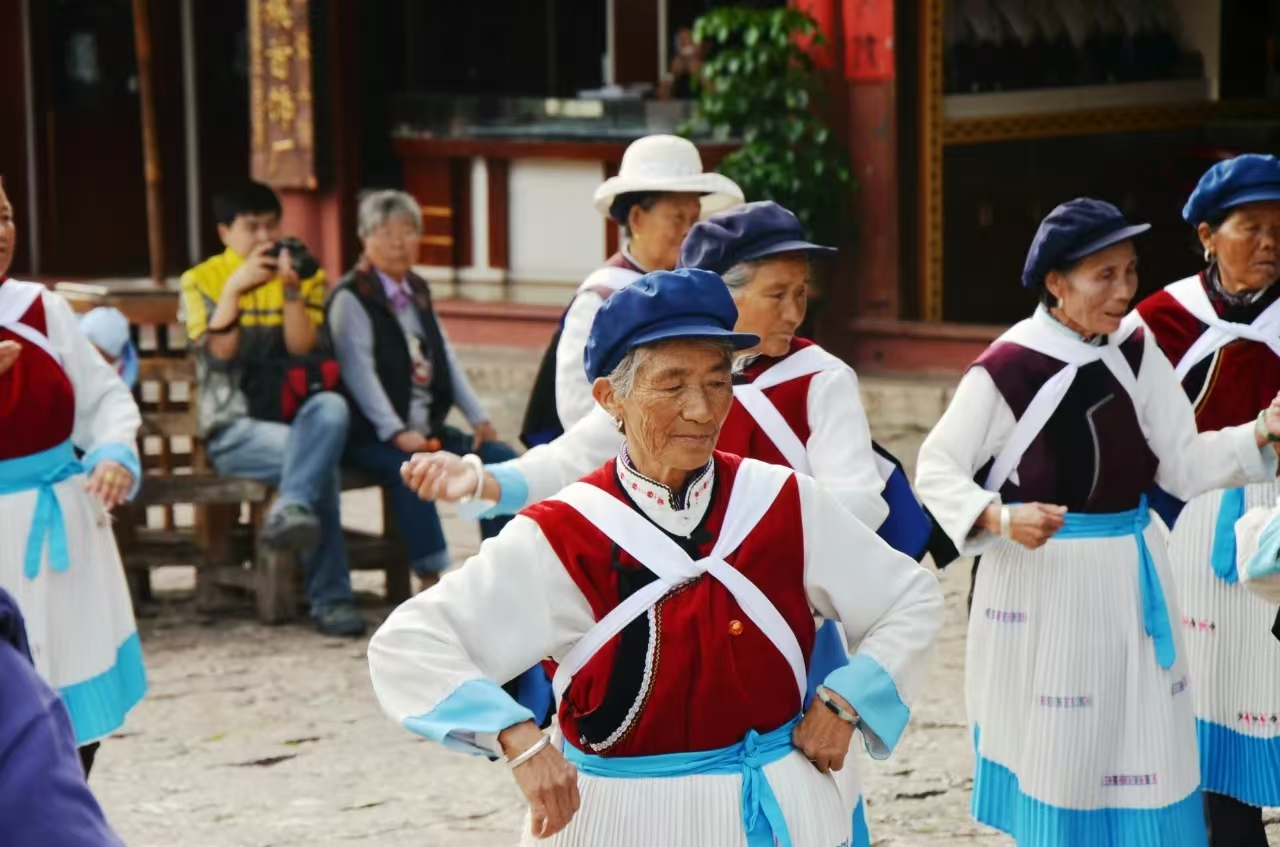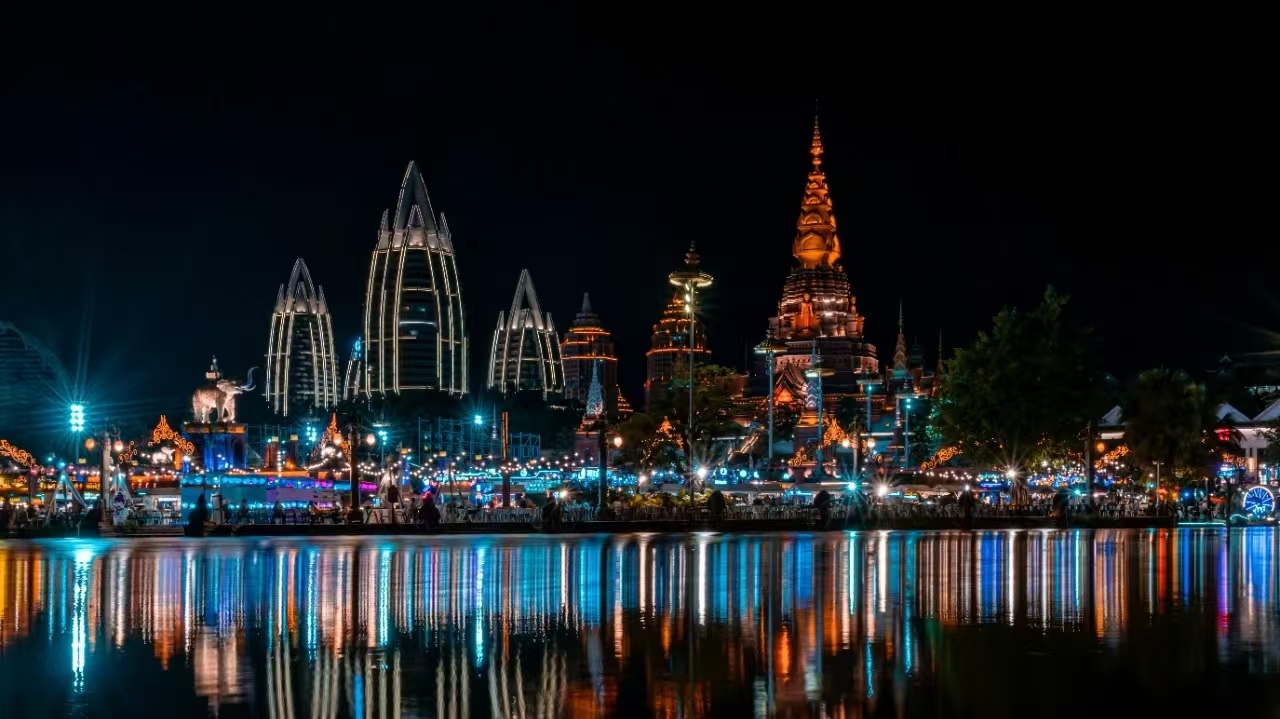
Travel by high-speed rail within China and from China to Laos has become an exciting and comfortable option and a recent experience we are pleased to report on.
The modern trains are spotlessly clean, whichever class you travel in and they depart on time from brand new stations resembling airports with full facilities, including coffee shops and convenience stores. What better way to travel than to sit back, relax and enjoy an ever-changing view?
The China to Laos train, starting in Kunming and ending in Vientiane, opened three years ago and it attracted international headlines when it transformed Laos from a land-locked to a land-linked nation.


We recommend departure from the city formerly known as Zhongdian, but now officially known as Shangri-La. This is either reached by train, as I will explain below or by a short domestic flight from Kunming or other airports in China.
Upon arrival in Shangri-La, one has the feeling of having arrived in Tibet. This is indeed the Tibetan Autonomous Region and after leaving the carriage, we immediately catapulted into a rich Tibetan culture, with a panorama of a sweeping landscape similar to the Tibetan Plateau.
The scenery is characterised by sheep and yak grazing the vast plains, framed by majestic mountains that are dotted with monasteries. The Songtsam Monastery is especially imposing, with its iconic architecture often compared to the famed Potala Monastery in Lhasa. There are smaller and less touristy monasteries for explorers who don’t mind hiking up steep stairs and hills.

Shangri-La has a lovely old town where Chinese tourists mingle with the local folks, enjoy food and drinks and shop for souvenirs. It is possible to check-in to a boutique hotel for a truly unique stay.
The city is positioned at 3,300 metres above sea level, with cool summers and cold winters. Those who do not like these climatic conditions are advised to start their journey in Lijiang.
The first stretch of our train journey – from Shangri-La to the ancient town of Lijiang, a service opened in November 2023 – takes one-hour-and-twenty-minutes through abundant tunnels and on many valley bridges.

Lijiang is a picture-perfect historical town, surrounded by mountains and positioned at an elevation of 2,200 metres. The spectacular scenery and rich culture make this a must-see for visitors to this region of China.
It is particularly impressive at night when thousands of red lanterns softly illuminate the streets, creating a unique atmosphere. Chinese tourists love to rent traditional costumes from local shops and pose for pictures in ancient alleyways and next to iconic sites. Foreign visitors can join this trend for some fun Instagrammable images!
For cultural exploration, it is possible to book an enlightening A Trails’ tour to meet with the Naxi people resident in the Lijiang area, as well as other indigenous groups across Yunnan province.

For those seeking peace and tranquillity, we recommend exploration of nearby Shuhe ancient town. This remains one of our favourite places in China, with traditional alleyways, streams flowing through the town centre and serene ponds, as well as elegant boutiques, coffee shops and restaurants.
There is plenty to do in and around Lijiang, including off-the-beaten-track hikes to venerable Tibetan monasteries high up in the hills. Chinese visitors like to ascend the snow-capped mountains by cable car, a half-day excursion option, but please be aware of potential crowds at the stations.
After absorbing the beauty of the Lijiang area, we continued our journey by high-speed train south to Dali in just two-and-a-half-hours. This was an exceptionally picturesque ride through a landscape of rugged mountains, verdant farm land, small towns and scenic Erhai Lake.

Another ancient town awaits us in Dali, with a distinctly different character. This is entered through historic tower gates which open onto large boulevards. Highlights were the attractive Confucian Temple and the lively Muslim Quarter, with its obligatory souvenir shops and restaurants. All the historical towns visited in this part of China have their own unique cuisines and local whiskeys and wines. I highly recommend you sample these!
The nearest city to Dali is Kunming, reached in two-and-a-half-hours by high-speed train. It is not necessary to stop here, except to catch a flight to an onward destination.
Kunming South train station is gigantic but well organised and we recommend changing trains at this station to take a connection to Jinghong, a journey of about three hours. This was a long day spent travelling in trains, but the trip was comfortable and enhanced with modern conveniences.

Upon arrival in Jinghong, the capital of Xishuangbanna province bordering Laos, everything is markedly different. The climate is tropical, the humidity has gone up a notch and Tibetan monasteries are replaced by Buddhist temples built in a Burmese style. This is a very different culture to what we have experienced on the journey so far.
Jinghong is famous for its night market, supposedly the largest one in South-East Asia. Whether you are looking for clothes, tea, drums or antiques, you will find them at the myriad of stalls. This is an enjoyable evening activity not to be missed!
Little stalls give way to Buddhist temples located in the middle of the market, street food eateries are positioned next to bars with live bands and a lakeside pathway provides a pleasant option for a leisurely stroll.
Jinghong is our starting point to explore the ancient, historical tea route that traders have plied for centuries. Our destination of Jingmai Mountain is reached by an average four-hour drive on small winding roads that cut alongside rice fields and plantations and through sleepy villages.

On every hill there is a pagoda and it feels more like Myanmar or Laos than China. Jingmai Mountain has been home to tea villages since the 10th century and the Old Tea Forests have UNESCO cultural status. I recommend a night in a mountain lodge or a small hotel before heading back to Jinghong.
I would like to share a few thoughts on accommodation, F&B quality and logistics in the areas of China we explored. There are excellent hotels in the three, four and five star categories. Whether you opt for a boutique property or a large international hotel chain, the standards are excellent. Western breakfasts are served even in the smallest of hotels.
Notably, there are many landmark and unique properties in Shangri-La and Lijiang for visitors who desire luxury. In all of the places we visited, the food quality was very good, freshly cooked and clean – with Western food options available in numerous venues.
Please be aware that communication was a challenge since English and other leading foreign languages were hardly spoken. It is advisable to use a Chinese translation app on a mobile phone or opt for one of our guided services.

Contrary to claims in many online blogs that cash is not accepted in China and Chinese payment apps must be downloaded, this is not true. Throughout our journey, Chinese yuan was widely accepted.
Climate wise, the best time to travel is spring and autumn. It is advisable to avoid the peak first week of May and the busy first week of October when travel becomes difficult due to a surge in domestic travellers during these national holiday periods.
Back to our travel overview! After our tea village and plantation exploration, we returned to Jinghong and took the train to Luang Prabang in Laos, a five-hour journey, including a one-hour stop at the Chinese border and a one-hour stop at the Laos border.
Passengers are required to leave the train with all their luggage at both checkpoints and board again after immigration and customs inspections. Although this may seem time-consuming, compared to the two-day China to Laos journey by road, it is a minor inconvenience.

We ended our journey at UNESCO-listed Luang Prabang, a perfect place for a few days stay. Besides well-preserved attractions, including the stately royal palace and lavish temples, this is blessed with beautiful countryside. A boat ride on the Mekong River is highly recommended, especially a day cruise to the Pak Ou Caves situated three hours upriver.
From Luang Prabang there are many options to continue the journey. A high-speed fifty-minute ride takes passengers to Vang Vieng. Nestled in a scenic bend alongside the Nam Song River and surrounded by a towering limestone terrain, this is the country’s premier eco-adventure town. Another option is a one-hour-and-fifty-minute ride to the capital city Vientiane.

For deep immersion into Mekong life, enjoy a relaxing two-day cruise across the border into Thailand to the Golden Triangle where the borders of Laos, Myanmar and Thailand converge.
Whatever your choice, our teams in China and Laos will gladly prepare a bespoke itinerary to your specific duration and dates. Please get in touch with us for some new, inspirational exploration opportunities.
Contact us to start planningyour next journey from China to Laos!

